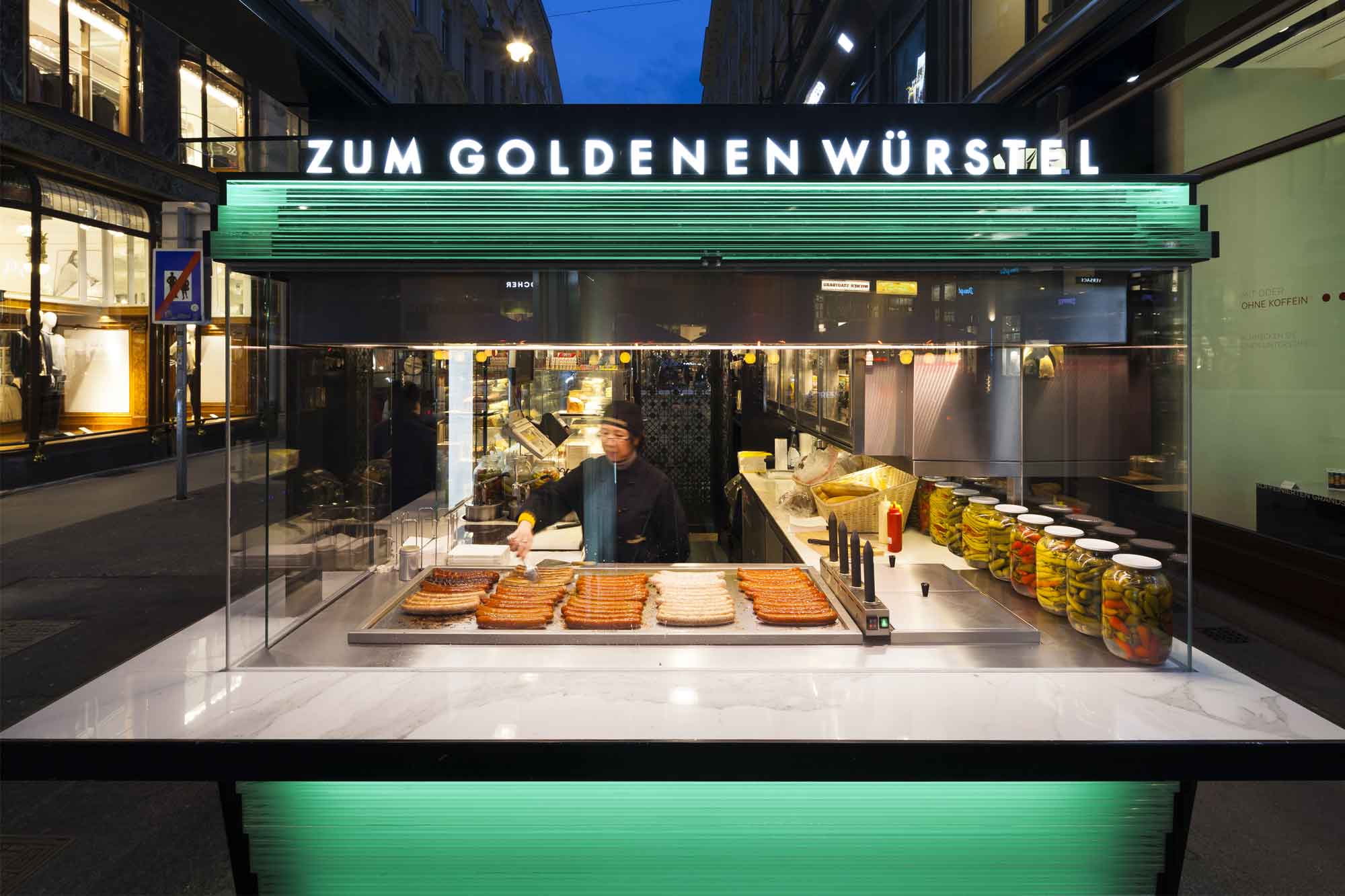
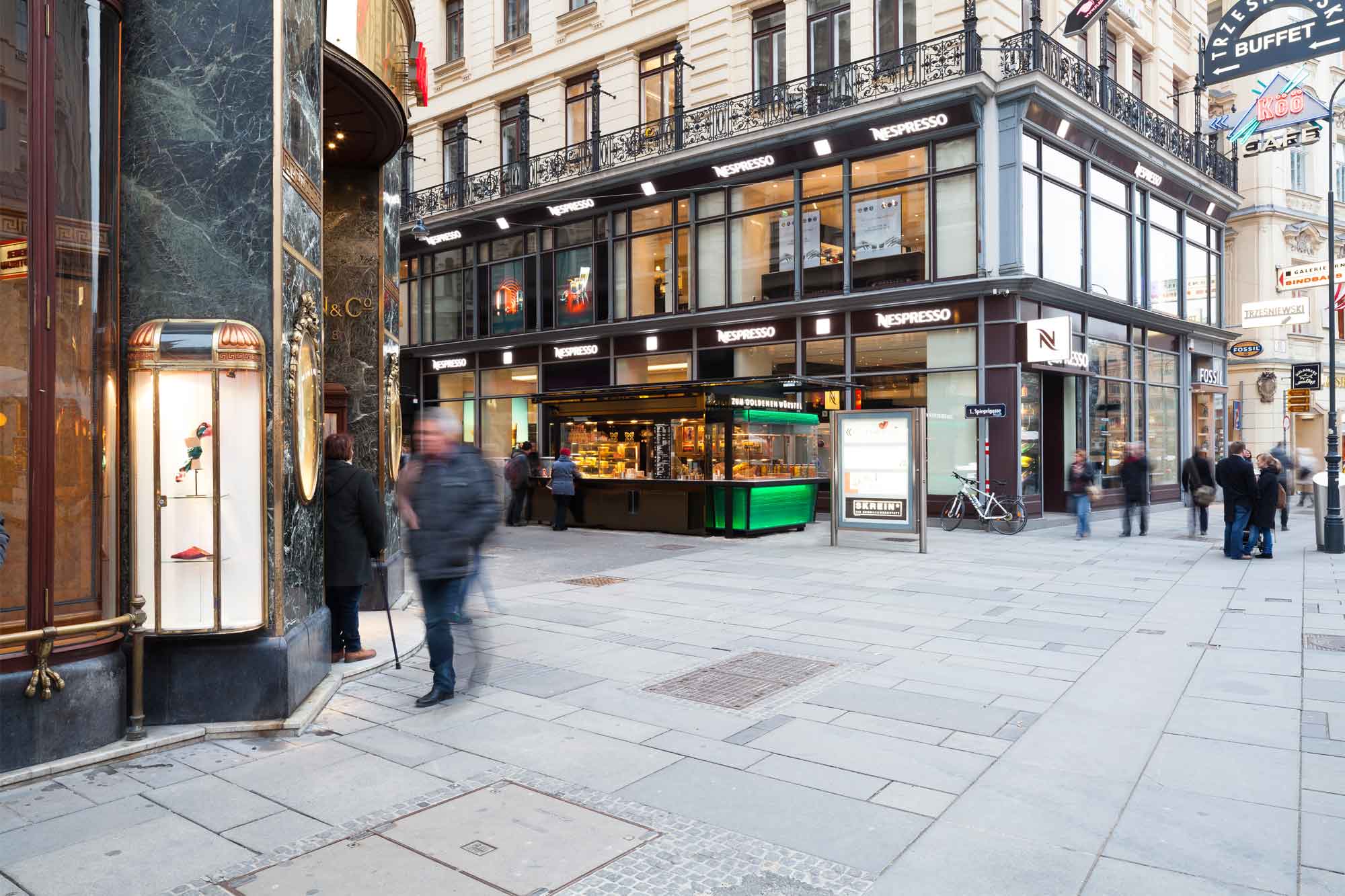
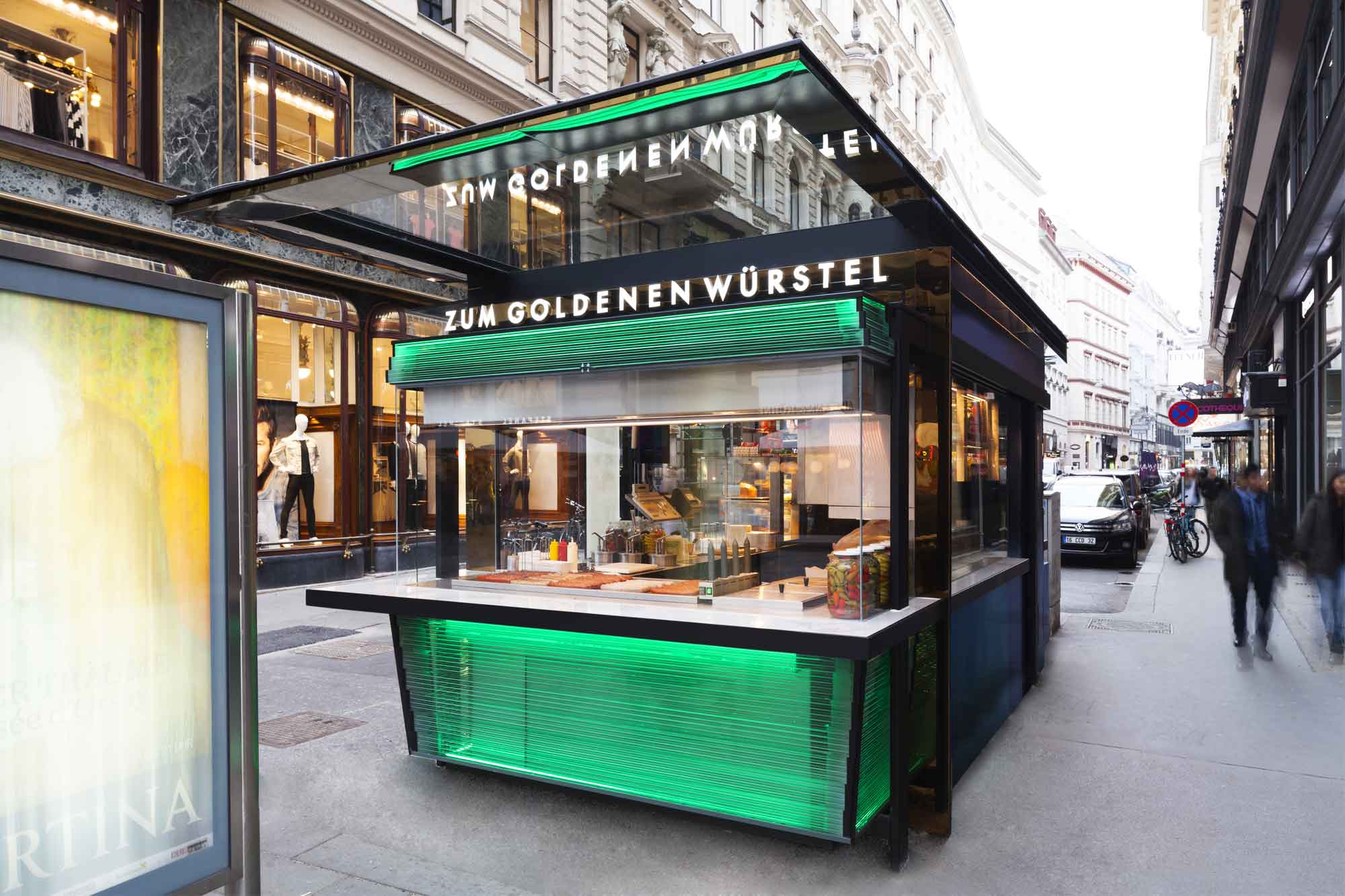
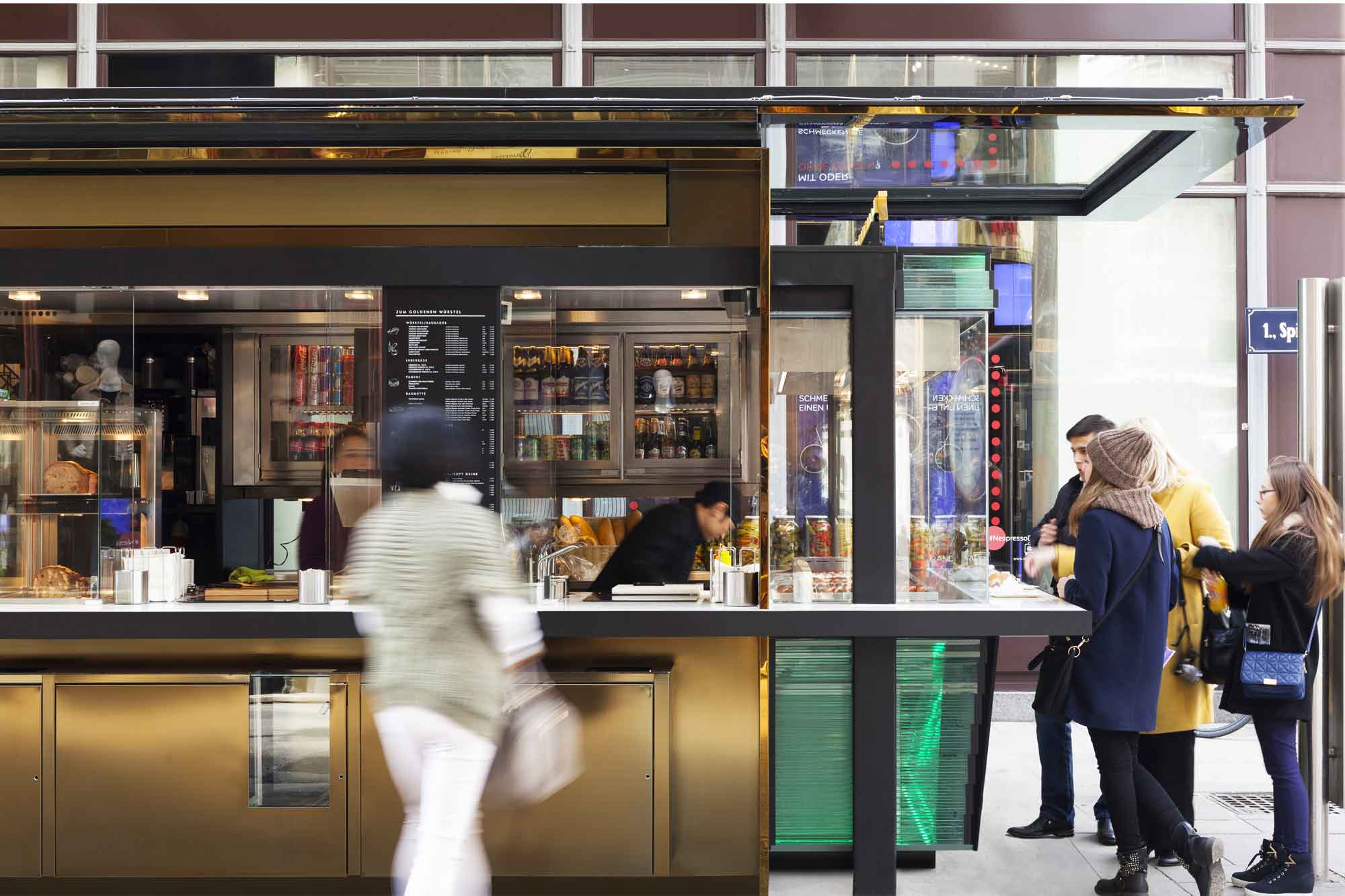
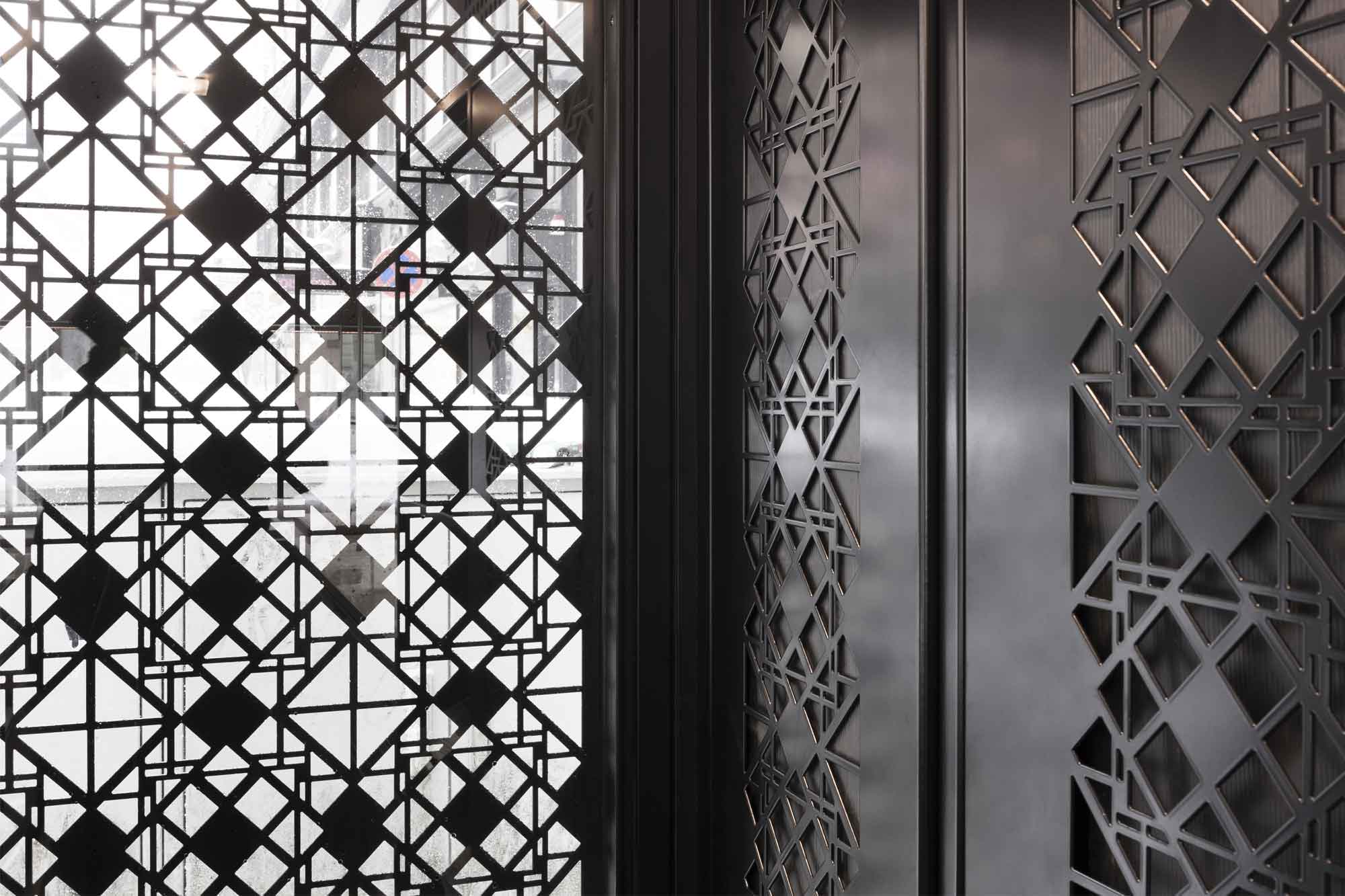
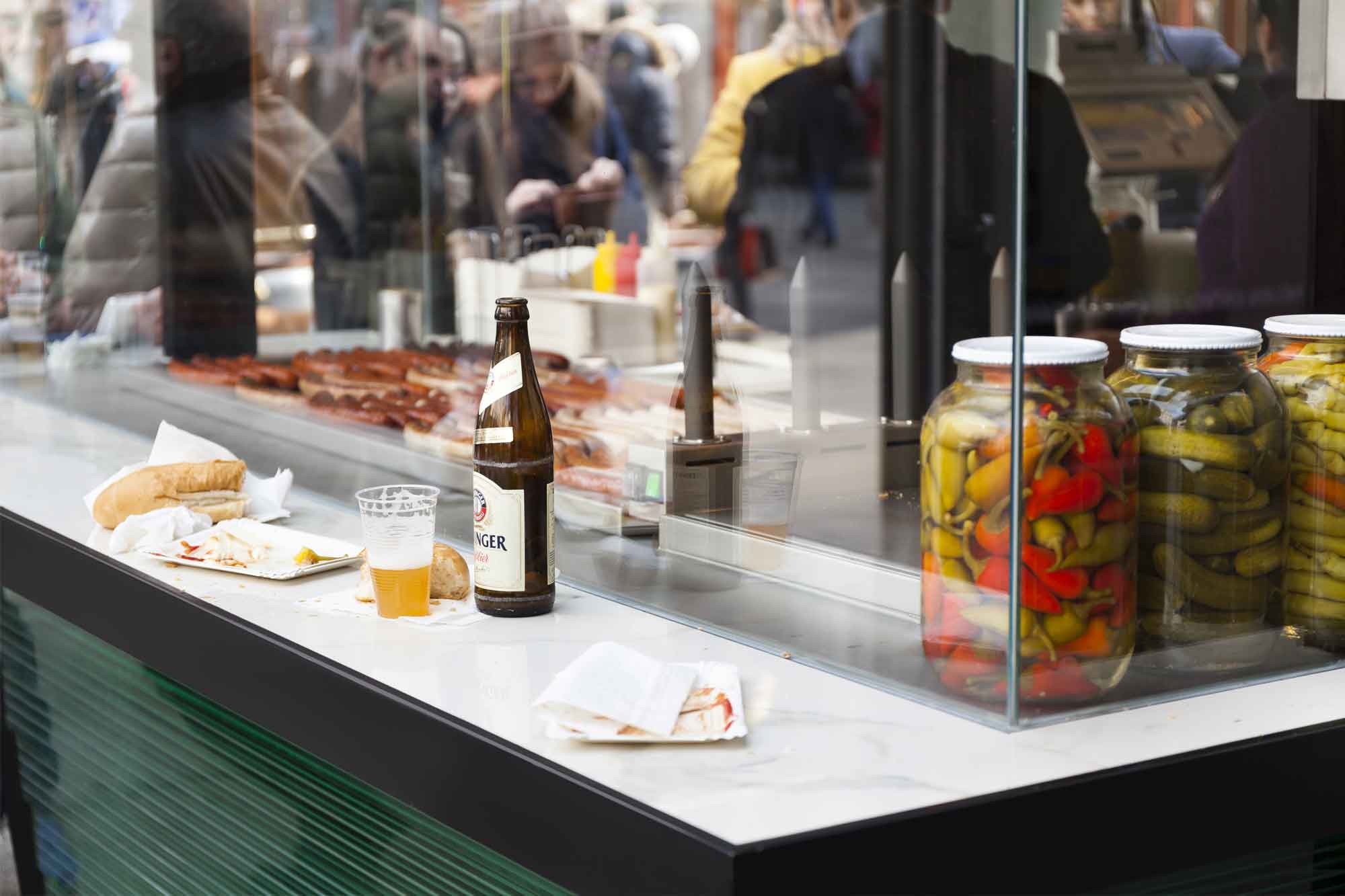
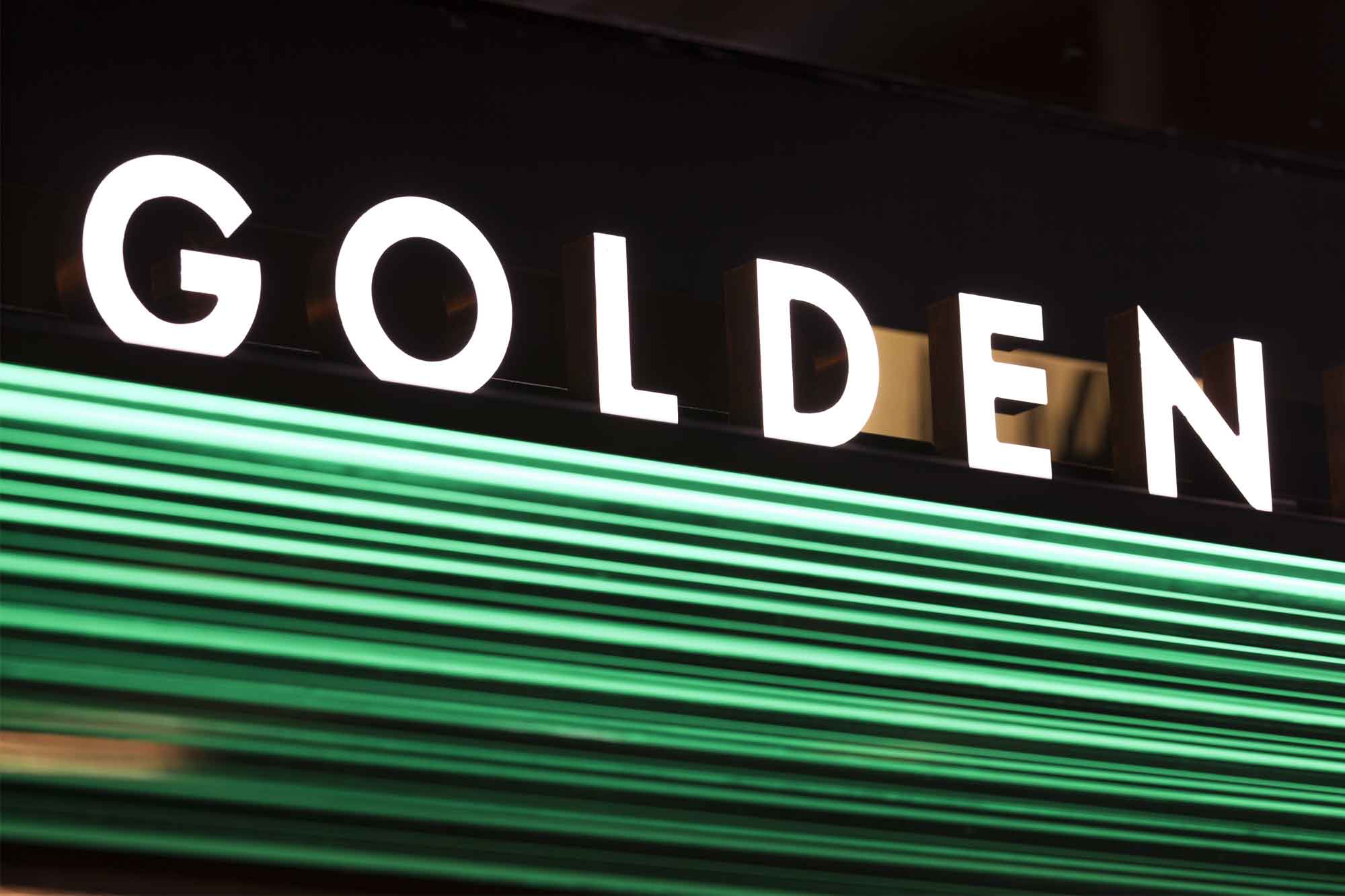
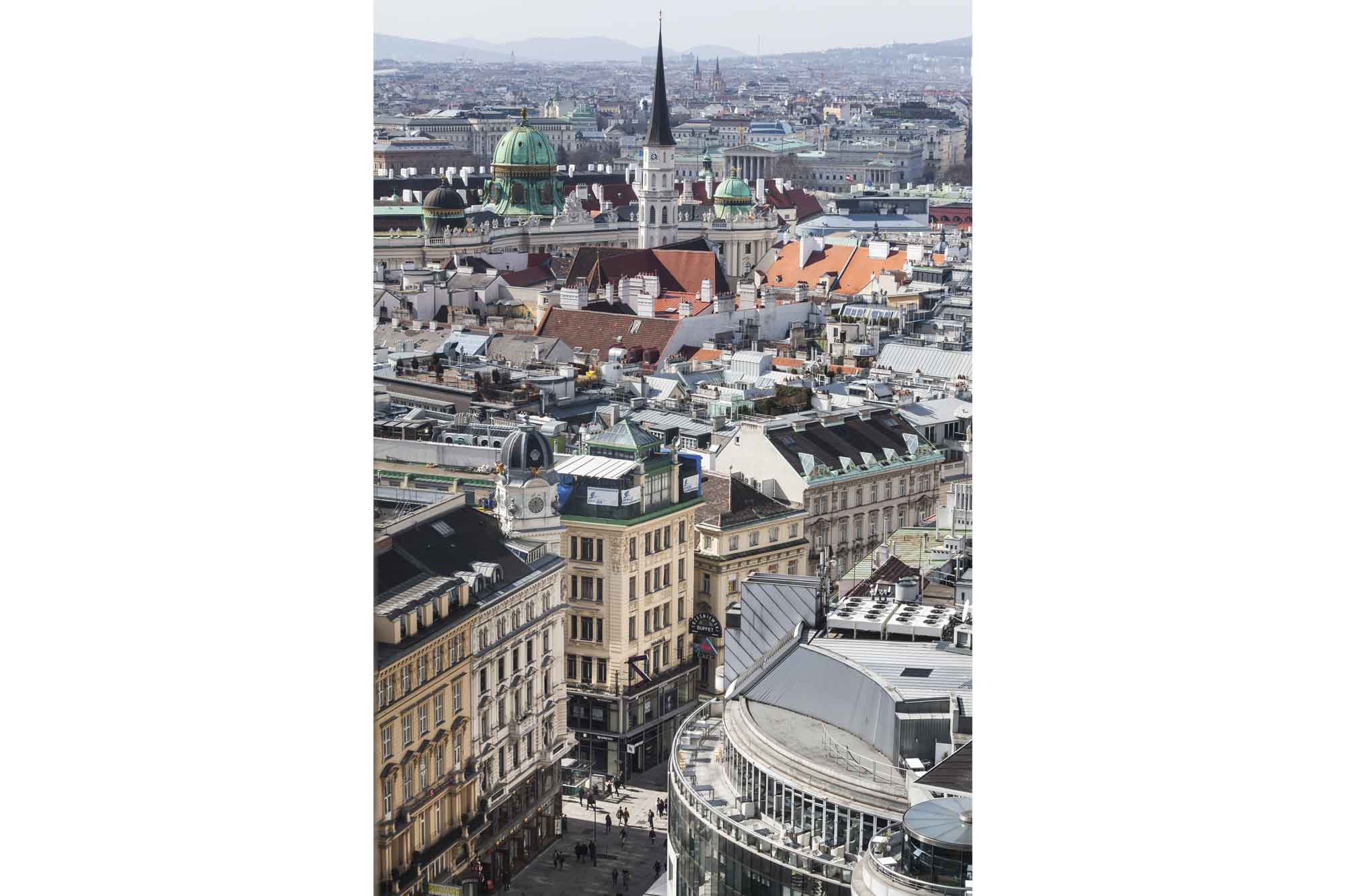
Zum goldenen Würstel — sausage stand on the Wiener Graben
The ticket booth designed by Carlo Scarpa at the entrance to the Giardini in Venice served as inspiration. Frames in different materials meander around the stand. The materials and their contrasts are based on the neighboring facades: shiny and matt golden stainless steel sheet, black steel, white marble, greenish layers of glass. And the classic sausages to go with it.
Design together with Markus Filgut
Graben corner Spiegelgasse, 1010 Vienna, 2015
Client: Die Freunde & Co Gastronomie GmbH

/ The smell of water ice on the ditch /
What you might still remember from the last Venice vacation: Water ice on the Bridge of Sighs, Bellini from the plastic cup in the vaporetto, the crowds in Harry’s Bar, or, perhaps only fleetingly and somewhat casually, a delicate ticket booth at the beginning of the Giardini, where the architect Carlo Scarpa has staged form and materials with palpable pleasure.
Change of scene. A dense fabric of covers lies around the Viennese moat: the gold-covered plague column still breathes the exuberance and relief of those who were spared. Stone lions stretch their mouths from the pedestal of St. Leopold and spit water into the fountain basin. The mighty bronze tobacco leaf on the portal of the Haas House will still remind us of Hans Hollein when we only know cigarettes from historical films.
In front of the men’s tailor Knize, designed by Adolf Loos, you can count back how many times you failed as a student at the friendly, determined cash desk ladies when you tried to explore the mezzanine rooms, even though you had put on the snobbish buyer’s masks. The J.B. Filz perfumery next door still sells the lavender water that Geyrenhoff gave to the young Stangeler after their memorable encounter at the pond below the Stangeler villa in Prein an der Rax — as Doderer reports in The Demons. The area around the trench has a certain smell, so to speak.
Next to the elegant store entrance of the former Braun & Co, in the shadow of Otto Wagner’s wealthy Ankerhaus, at the beginning of Spiegelgasse, is the “golden sausage”: a stall to walk around and touch. Even though the volume is only 33m³, all four sides are different and made of different materials.
Two frames meander around the stand: a band of polished brass cuts through the supporting frame made of black lacquered steel profiles, folds once around the edge of the roof and forms the canopy on the opposite side. On the front side, a display case made of layered glass panels stretches out towards the moat. They shimmer dully at night.
We first had to run the hole pattern in the rear entrance door through a logarithm program to create a uniform pattern. The letters of the lettering are cut from Plexiglas panels and covered with gold leaf, as this was the cheapest method of production. Brass, on the other hand, is usually no longer brass, but often electrochemically treated stainless steel sheet, which is more robust and less susceptible to oxidation processes.
In summer, a fine mist cools the foreheads of strained sausage eaters, while in winter the heated stone counters prevent elbows from freezing. Through the glass opening in the panoramic canopy, guests can watch the clouds drift by and gather their thoughts if they have once again failed to explore the Knizemezzanine. Veltliner sparkling wine in a plastic cup would be worth a try. Every now and then, hopefully, a hint of Scarpa’s creative whim will waft by, from the edge of memory. Perhaps the smell around the area has added a nuance; a hint of water ice to the lavender scent, for example.


